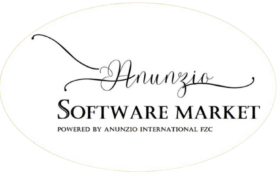Last Updated on December 12, 2025 by Anunzio International
In the world of research, data is the backbone of knowledge. Whether you’re conducting an academic study, analyzing customer feedback, or interpreting social trends, the ability to manage and make sense of vast amounts of qualitative data is crucial. This is where NVivo, a leading qualitative data analysis (QDA) software, comes into play. It provides researchers with a powerful platform to organize, analyze, and interpret unstructured data efficiently. But how does NVivo truly revolutionize the research process? Let’s explore its capabilities, applications, and why it stands out in the realm of qualitative research tools.
Understanding NVivo: What Makes It Unique?
NVivo is a sophisticated software designed to help researchers handle large volumes of textual, audio, and visual data. Unlike traditional methods of qualitative data analysis, which can be tedious and time-consuming, NVivo offers automation and structured tools that streamline the process. Its strength lies in its ability to manage diverse data formats, such as interviews, focus groups, articles, videos, and even social media content.
The software supports coding, visualization, and querying of data, allowing researchers to draw meaningful insights with greater accuracy. With NVivo, you no longer need to sift through endless transcripts manually. Instead, you can tag relevant themes, identify patterns, and develop in-depth narratives, all within a single interface.
How NVivo Enhances Qualitative Research
1. Streamlined Data Management
One of the most daunting tasks in qualitative research is organizing raw data. NVivo simplifies this by providing a centralized repository where all your documents, notes, and references can be stored and systematically categorized. With features like hierarchical coding and automatic classifications, researchers can quickly sort and retrieve information, significantly reducing time spent on manual organization.
2. Efficient Thematic Analysis
NVivo is highly effective in thematic analysis, a fundamental technique in qualitative research. Its powerful coding tools enable researchers to systematically categorize data into themes and sub-themes, facilitating the identification of key patterns. Additionally, the software’s word frequency, text search, and data visualization functions help uncover recurring concepts, hidden trends, and meaningful insights that might otherwise go unnoticed, enhancing the depth and accuracy of analysis.
3. Advanced Data Visualization
Numbers and texts alone can be overwhelming. NVivo addresses this by offering rich data visualization tools, including mind maps, word clouds, and cluster analyses. These features enable researchers to present findings in a more comprehensible manner, facilitating better storytelling and data interpretation.
4. Seamless Collaboration
Collaboration is often a crucial part of research projects, especially in academic and professional settings. NVivo allows multiple users to work on the same project, ensuring seamless teamwork. Whether you’re sharing coded data, comparing interpretations, or co-authoring research papers, NVivo makes collaboration smooth and efficient.
5. Integration with Other Research Tools
Another reason why NVivo stands out is its ability to integrate with widely used tools such as Microsoft Word, Excel, SPSS, and even reference managers like EndNote and Zotero. This interoperability ensures that researchers can import and export data effortlessly without compatibility concerns.
Real-World Applications of NVivo
Academic Research
In academia, NVivo is widely used for qualitative dissertations, case studies, and ethnographic research. Whether analyzing interview transcripts or open-ended survey responses, students and scholars rely on NVivo to manage their data efficiently.
Market Research and Business Insights
Companies use NVivo to analyze customer feedback, social media discussions, and employee sentiment. By examining qualitative data from surveys, reviews, and forums, businesses can make informed decisions that align with consumer needs.
Healthcare and Social Sciences
Healthcare professionals and social scientists benefit immensely from NVivo’s capabilities. Whether studying patient experiences, behavioral trends, or policy impacts, the software aids in capturing rich insights that drive meaningful change.
Tips for Maximizing NVivo’s Potential
To get the most out of NVivo, consider the following best practices:
- Define a Clear Coding Strategy: Before diving into analysis, establish a structured approach to coding your data. This ensures consistency and enhances reliability.
- Leverage Queries and Search Functions: NVivo’s query tools help you uncover hidden connections between themes and concepts.
- Use Visualization Tools: Don’t just rely on text-based analysis; make use of word clouds and charts to gain a holistic understanding.
- Keep Your Data Organized: Properly naming files and using NVivo’s classification features will save time and prevent confusion later in the research process.
- Regularly Back Up Your Work: Given the complexity of research projects, it’s essential to maintain backups to avoid data loss.
The Game-Changing Impact of NVivo on Research
NVivo is more than just a qualitative data analysis tool—it is a game-changer for researchers across various fields. Its ability to manage, analyze, and visualize complex qualitative data makes it indispensable for academics, businesses, and professionals alike. By streamlining data handling and offering advanced analytical capabilities, NVivo empowers researchers to focus on generating meaningful insights rather than getting lost in data overload.
Whether you are a student embarking on a thesis, a market analyst dissecting customer opinions, or a social scientist studying human behavior, NVivo provides the structure and efficiency needed to elevate your research. As the world continues to generate vast amounts of unstructured data, tools like NVivo will remain essential for making sense of the information that shapes our decisions and discoveries.
Thank you for reading this article on Anunzio International FZC
